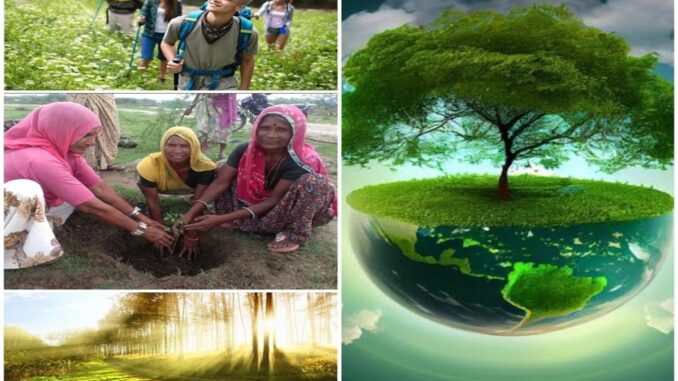
National Tourism Day (January 25) is also an occasion to recognise the impact of afforestation on India’s growing tourism sector
In 2022, the Ministry of Tourism formulated a national strategy for sustainable tourism, pinpointing seven key areas crucial for inclusive, carbon-neutral, and resource-efficient tourism. Among these strategic pillars, biodiversity protection takes centre stage, highlighting the importance of planting more trees and conserving existing green cover.
On National Tourism Day, Pradip Shah, environmentalist and co-founder of Grow-Trees.com explores how tree plantation not only aligns with the national strategy but also plays a vital role in preserving the ecological balance of our tourist destinations.
Promotes sustainable tourism
There is a growing trend to focus on eco-tourism while visiting hill stations and verdant, eco-sensitive regions where trekking and similar activities are allowed. The tourism department and tour operators also bear the responsibility to safeguard natural resources and ensure that the wilderness remains as enjoyable in the future as it is now. Planting more trees and enhancing the green cover in such areas can ensure that the benefits of a healthy environment are extended to the next generation. Planting and preserving trees enhance the basic tenets of responsible tourism.
Mitigates the effects of mass tourism
The rich biodiversity of forested zones and wildlife sanctuaries is increasingly drawing a large number of visitors. However, the surge in mass tourism to these areas also brings forth major challenges, including excessive land use, pollution, fodder extraction and heightened human-wildlife conflicts. Environmental organisations are actively addressing these issues. Recognising the strong connection between tree planting and ecological health, Grow-Trees.com has launched projects like ‘Trees for Ecotourism™️’ in the forest region of Gnathang near Pangolakha Wildlife Sanctuary in East Sikkim. The primary goal of such projects is to improve forest health while alleviating the adverse impacts of mass tourism.
Fights Climate Change
In its 2023 report, ‘A Healthy Forest for Healthy People,’ the UN emphasises that sustainable forest management and the prudent use of resources are pivotal in the battle against climate change. Trees help us to combat climate change mainly due to their natural ability to absorb carbon dioxide and release oxygen. In cognisance of this fact, Grow-Trees.com has planted more than 19 Million trees nationwide and in Africa. Once fully grown, these trees will absorb 380 Million kg of CO2, annually showcasing the crucial impact of trees in addressing climate change. Mitigating the effects of global warming also contributes to creating an ecologically balanced environment, which is of utmost importance for the growth of the tourism sector.
Enhances scenic beauty
With an endless variety of species, trees offer an aesthetic and calming green cover to urban zones. Some of the most famous and tourist friendly cities in the world are known for their gardens, tree-lined avenues and public parks abundant with foliage with diverse green textures and flowers. In the concrete jungles of big cities, they also help to reduce the heat island effect, regulate microclimate, mitigate air pollution and improve hydrology. Green zones in cities make them livable and pleasing not just for the residents but tourists who may be visiting or passing by.
Promotes job creation
Tree planting projects create multiple job opportunities for local communities. Once completed, such projects need regular monitoring, watering, and preservation, ensuring that the local populations will remain connected to their maintenance. Conserving trees and biodiversity also creates a feeling of ownership among them. This active engagement of local communities is crucial in tourism as it helps in developing a welcoming and hospitable environment and facilitates vibrant cultural exchange for tourists to experience.








